A lot of boxing tactics are counter-intuitive; keeping our eyes open under fire, leading with our non-dominant hand, and tucking the chin are just a few examples of the unnatural adjustments that beginners have to wrap their heads around. Likewise, beginners often resist the idea of intentionally missing or pulling punches in a sport where hitting is the only path to victory. As you work through this article, you may ask yourself:
- Why would anyone expose themselves to miss a punch on purpose?
- Why waste precious energy on shots that don’t score or do damage?
These are both valid questions, the answers to which will take your appreciation for the sweet science to a whole other level. Every great boxer and martial artist throughout history pulled punches and aimed to miss, and this article is going to tell you why.Read on to learn how non-scoring punches, pokes, and intentional misses improve accuracy, defense, range-play, footwork, ring generalship, and more.
Aiming to Miss: Advanced Boxing Tactics
You must land punches to win a fight, but trying to land every punch you throw is dangerous, inefficient, and naive. According to Bob Canobbio, owner and founder of CompuBox – a computerized scoring system that counts every punch a boxer throws and lands – Mayweather’s average connect rate of 46% ranks as the best among current active fighters. That means Mayweather, arguably the most technical fighter of all time, still misses over half of the punches he throws. Knowing that, you must be prepared to miss. Better yet, you should explore boxing tactics that make misses work for you.
Intentional vs. Accidental Misses
As anybody who’s ever whiffed on a double-end bag or had a punch slipped will tell you, missing punches you intended to land is exhausting. We rely on solid contact with bags, gloves, mitts, and faces to decelerate our power punches, but when we miss shots we intend to land, we have to stop them ourselves. This means either slamming on the “brakes” at a moment’s notice, or allowing the punches’ momentum to carry us off-balance, neither of which feels good. If Mayweather missed 54% of his punches in this way, he’d be gassed and beat up in every single fight. So what’s his secret?Mayweather may be missing most of his punches, but many are designed to fail; he’s missing intentionally, not accidentally. For the purpose of this article, we define intentional missing as:
- “Hitting” air: Any punch that is thrown with no intention of hitting the opponent. This is very different than missing a punch, both in terms of punching intent and mechanics. “Hitting air” should almost feel like shadowboxing, where you stay balanced and in control of the “lock-out point” throughout.
- Hitting any non-scoring area: Any punch that intentionally makes contact with a non-scoring area, including the opponent’s shoulders, elbows, or gloves. This includes Barry Robinson‘s theories on probing punches, trapping and head/glove/shoulder control; ExpertBoxing‘s talks on how to use light punches; and what Precision Striking calls “touching.”
Though small/light/probing/non-scoring punches often come in the form of a jab, any punch can be thrown to intentionally miss, and will give you all the same benefits discussed in the next section.
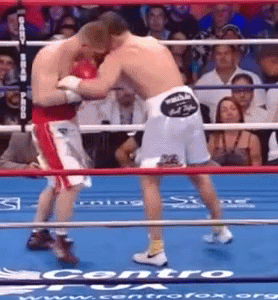
Gennady Golovkin probes with a non-scoring left uppercut to set up the overhand right.
Unlike accidental misses, intentionally “hitting air” and non-scoring areas won’t off-balance you, burn you out, or leave you exposed. In fact, the majority of strikes thrown in any high-level combative sport intentionally miss or target non-scoring areas.Intentionally missing punches in this way allows you to:
- Occupy and misdirect the opponent’s guard to create openings
- Track down opponents with great head movement
- Draw out counter punches to counter yourself
- Pry open the opponent’s guard
- Disguise power punches
- Obstruct incoming punches with your extended hands
- Keep the opponent defensive to control the pace of the fight
- Disrupt attacks, forcing opponents to reset
- Cover your exit
- Save energy while volume-punching
- Find your range
- Maintain your range
- Close range
- Initiate a clinch
- Transition to hand-fighting
- Transition to head control boxing tactics
- Reset balance mid-combination, and much more!
Overall, throwing non-scoring punches is one of the best boxing tactics for simultaneously improving offense and defense, as you’ll learn in the next section.
10 Reasons to Throw Non-Scoring Punches
Intentional misses can score, as opponents sometimes move into them accidentally, but even when they don’t, non-scoring punches are worth the effort. This sections covers 10 different offensive and defensive applications for intentional misses, with film study clips featuring:
- Floyd Mayweather
- Gennady Golovkin
- Vasyl Lomachenko
- Micky Ward
- Saul “Canelo” Alvarez
- Miguel Cotto
- Emanuel Burton/Augustus
- Errol Spence Jr.
So what can non-scoring punches do for you in your next fight or sparring session? Let’s find out.
1. Force resets, maintain distance
Probing punches into the air in front of you is an energy-efficient tactic to keep swarming opponents on the outside, combining the benefits of a feint and posting arm.
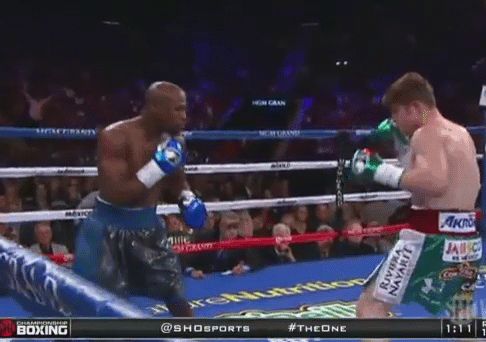
Floyd pokes his jab into the space in front of Canelo’s face to keep him at distance. Floyd’s intentional miss still looks like a real punch, the threat of which stops Canelo’s forward momentum, forcing him to reasses. Floyd’s probing left hand also places an obstacle between them, which he can use to parry or get physical with head control.
2. Pinpoint your punching range (and your opponent’s)
Whether they land or not, probing punches act as measuring sticks. Your sense of range and timing will be enhanced any time you extend the hand towards the opponent, which has obvious benefits for both offense and defense.
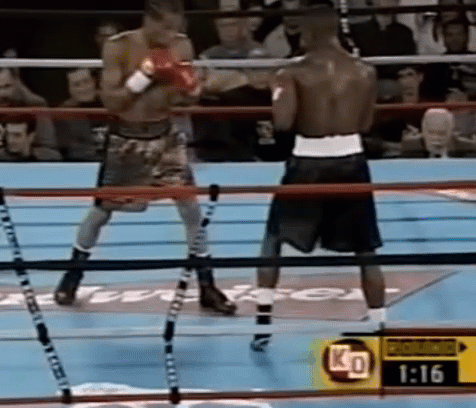
In this clip, we see Mayweather probe with the left hand to pinpoint punching range against Emanuel Burton. As soon as his glove makes contact with Burton’s face, Floyd knows his range, allowing him to deny the Drunken Master’s set-up jabs with a series of slips.
Bonus benefit: Notice Floyd’s probe-to-parry transition? He uses his first probing punch to parry Burton’s right cross up, knocking it off course just enough to get the job done. It was an easy parry because his intentional miss left his hand in position to block the path of incoming fire.
3. Track down slippery opponents
If your opponent commits to head movement, winging power punches is a terrible idea. Your opponent is looking to make you miss, either to tire you out or counter, and loaded punches are easier to spot.
Rather than swinging hard and hoping, use light, non-scoring punches to miss small and track down your opponent. It’s safer, smarter, and stops the opponent doing what they want, which is to make you miss big. Once you’ve got a hand on them, or even near them, landing power punches is much easier. You’ll have your measuring stick out for better range and timing reads, plus your extended hand can physically stop their head from moving.
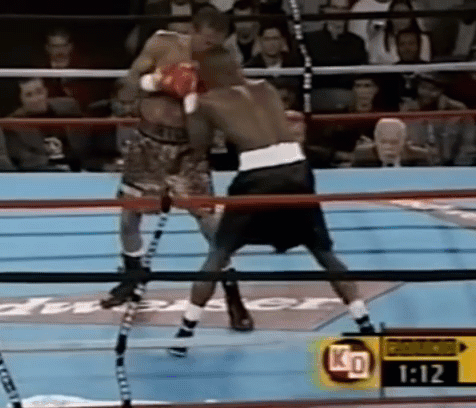
ABOVE: Floyd lands a big 3-2, putting Burton on the defensive and looking to slip and counter from his bottom-right head slot. Rather than gambling on a power punch, Floyd sticks out a gentle left hand to track Burton’s head. Making contact, Floyd unleashes the right hand, landing hard and denying the slip-and-counter his opponent wanted.
4. Pry open guards, create openings
Targeting non-scoring areas like the guard, forearms, and elbows with small punches won’t score or hurt your opponent, but does create opportunities for sneaky trapping and hand-fighting techniques. When your hand is already making contact the opponent’s glove, it becomes possible to push and pull their guard open, creating opportunities for more serious offense.
Vasyl Lomachenko shows us how it’s done:
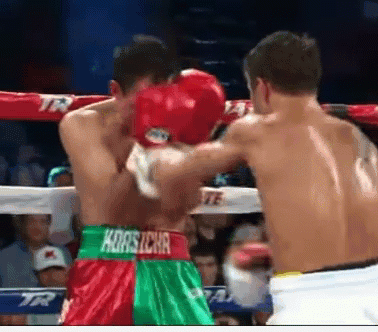
ABOVE: Lomachenko mixes small, non-scoring punches with pry-and-punch boxing tactics. This seamless transition would not be possible if Lomachenko started with power punches.
5. Cover your retreat
Working like a feint, punching air is a great way to cover your retreat, for many of the same reasons discussed in point #1 on maintaining distance.When thrown at the end of a combination, an intentional miss will slow your opponent’s pursuit, forcing them to address the offensive threat you’re selling. The extended punching arm can also be used to obstruct follow-up punches, parry, or post to keep opponents from closing in. Best of all, this controlled non-scoring punch won’t tire you out or expose you to a counter in the same way that real covering fire will.
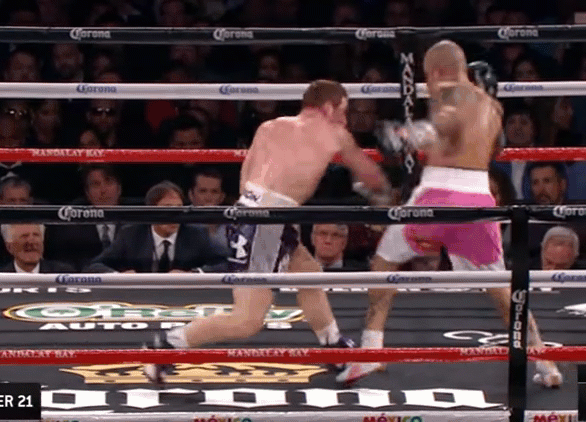
ABOVE: Canelo rolls under Cotto’s counter left hook, then uses a probing left hand to cover his escape route. In this instance, Canelo’s hand makes contact with Cotto’s head as he lunges forward in pursuit, holding him at bay.
6. Draw enemy counters, exploit the openings
If you’re fighting a dedicated counter-puncher, intentional misses can trick your opponent into biting on false openings, giving you opportunities to run them into punches they don’t see.Let’s say your opponent is hell bent on countering your jab. Every time you jab, they slip outside and counter with a cross. One way to counter this counter-punching tendency would be to use a throw-away jab to trigger the slip-and-cross response.Watching for your opening, you throw a jab to intentionally miss. Stay balanced, keep your eyes open, and don’t commit any weight to the punch. The moment they initiate their counter, throw the cross with a head-slot change, then bask in the glory of running someone into a punch at full speed!
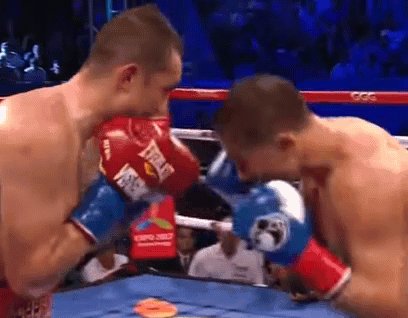
ABOVE: Gennady Golovkin draws a classic counter left hook out of his opponent by intentionally missing with a throwaway hook of his own. The moment his opponent hooks, Gennady threads a power uppercut underneath, exploiting the opening his missed hook created.
7. Create distractions for surprise attacks
As mentioned earlier, intentional misses works well as feints. Thus far, we have covered the defensive application, but feinting has obvious offensive utility as well. In particular, intentional misses can pull your opponent’s attention away from the openings you plan to attack. Following the basic “high-low, low-high” principle, you can open up head or body attacks by intentionally missing punches up or down, then hammering power shots at the undefended level. Micky Ward’s high-low left hook is a classic example:
This approach works with real punches, too. Power punches are usually more convincing distractions – the opponent feels your power through their block and thinks oh shit, better defend! – but they cost more energy and leave you susceptible to accidental misses.
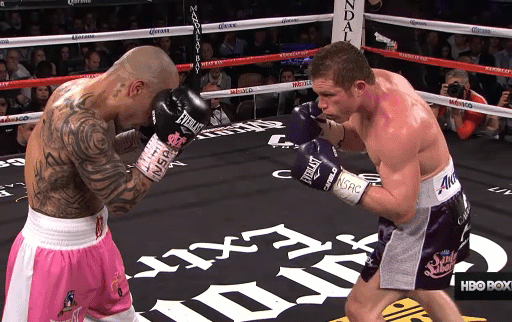
ABOVE: Canelo hits air with the left jab to misdirect Cotto’s attention, setting up a beautiful right cross upstairs.
8. Recover balance after an accidental miss
Accidental misses are tiring and dangerous, but they’re inevitable, which is all the more reason to find ways to mitigate their risks. To that end, using non-scoring punches after accidentally missing a shot will help you recover, lock on target, and disrupt the opponent’s counter-punching options; part balance beam, part measuring stick, and part posting arm to control the opponent’s posture, intentional misses can keep you safe in the worst scenarios.
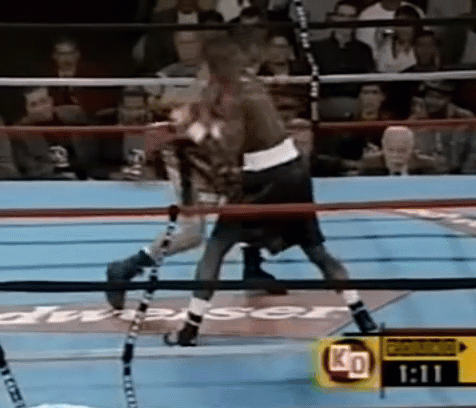
ABOVE: Mayweather whiffs a loaded left hook against Burton, but recovers from his accidental miss using a non-scoring left hand adjustment. The left hand helps Floyd move into position, take a new attack angle, and disrupt disrupt the right uppercut Burton was looking for on his way up.In fact, Floyd’s non-scoring left hand action happens to be one of Barry Robinson‘s favorite control options:
9. Camouflage scoring punches
Perhaps the most obvious use for the boxing tactics describe here is to disguise real, scoring punches behind non-scoring shots. Leading with intentional misses gives your opponent a false sense of confidence in their range and defense, and helps you catch them off-guard with abrupt rhythm changes.
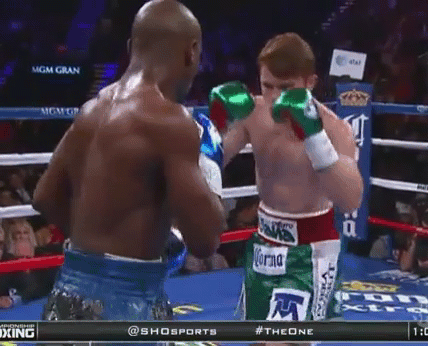
ABOVE: Floyd jabs at the gloves, then changes rhythm and intent, suddenly committing to a piston jab that snaps Canelo’s head back.
10. Close range safely
With their feinting function, intentional misses put your opponent on the defensive, which can buy you the precious seconds you need to close the gap. Moreover, since they require little energy and keep you on-balance, they leave you ready and alert to deal with any offense your opponent puts out as you move in.
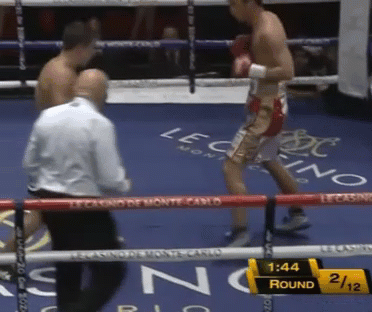
ABOVE: Gennady Golovkin jabs at his opponent’s left glove, closing in behind the extended left hand to get the overhand off.
Wrapping Up
Learning how, why, and when to intentionally miss punches takes a lot of time and effort, but it’s one of the most important distinctions between novices and pros. As far as the hierarchy of boxing tactics is concerned, probing with non-scoring punches isn’t a perfect or foolproof. Taking a hand away from guard position can expose you to danger, especially if your range or posture is off. These boxing tactics won’t win any fights by themselves, but they’re a part of every great fighter’s toolbox. Whether you’re a nak muay, karateka, boxer, or mixed martial artist, learning how to aim to miss pays dividends.
To learn more advanced boxing tactics, check back with the blog regularly, and be sure to join the Facebook fight community.
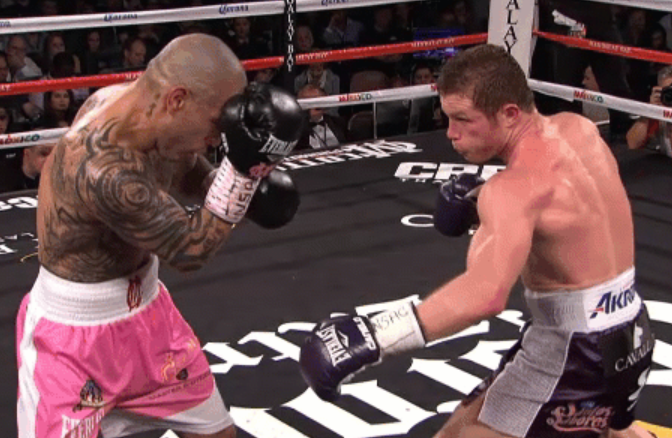
1 thought on “Advanced Boxing Tactics: Why Do Pros “Aim to Miss”?”
Comments are closed.